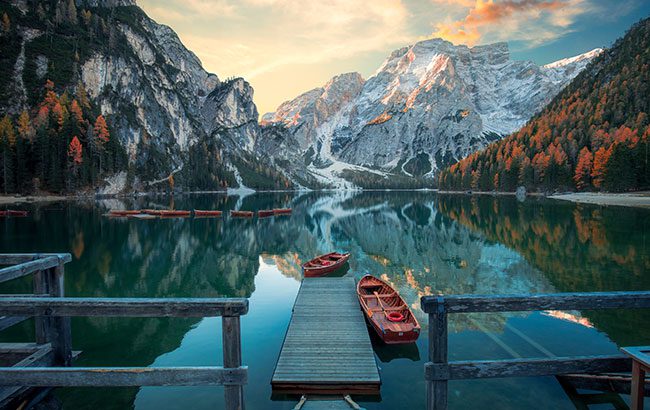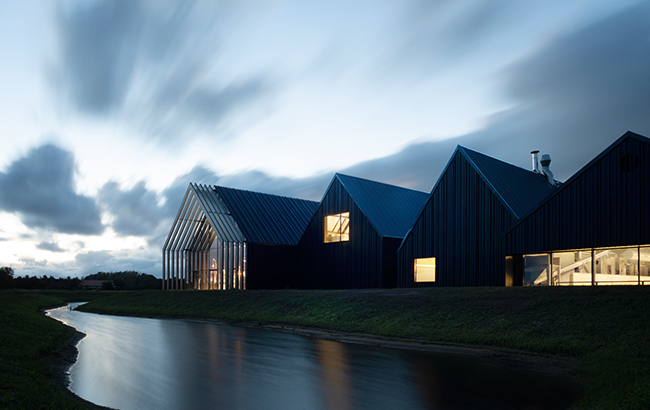European distillers: driving whisky innovation
While Scotch whisky has centuries of heritage to draw upon, as well as strict production rules, European distilleries in the likes of Finland, France and Italy have a freer hand in their creations, with impressive results.

*This feature was originally published in the January 2022 issue of The Spirits Business magazine.
In 2016, there were excited reports in the press that France was planning to usurp Scotland at what it does best. “Within 15 years the world’s best whiskies will be French,” a supremely confident Nicolas Julhès, head of La Distillerie de Paris, told The Times. “We will be able to stop copying the Scots and bring a real French style.”
Elsewhere, readers were being informed that French winemakers in Champagne were preparing to flee their vineyards and replant England’s South Downs to escape climate change.
So far, neither story has quite come true. “French whisky is still very small,” says Matthieu Acar, sales director at La Maison du Whisky (LMDW). “There are around 100 producers, and altogether they produce as much as a medium-sized Scottish distillery like Auchentoshan.” Being responsible for sourcing French whisky for an independent bottling range called Version Française, launched in 2021, he believes the Scots have nothing to fear – for now, at least.
LMDW has seven French single malt whiskies available under the Version Française label, and they are clearly not cheap alternatives to Scotch. Prices range from €85 (US$96) for Le Breuil 2017 from Normandy to €115 (US$129) for Alpenglow 2015. “We take inspiration from our traditional spirits like Armagnac and Calvados,” Acar explains. “We’ve had distillations since the seventh century in France, so we know how to distil.” When he joined the firm five years ago, French consumers dismissed the idea of native whisky, but he feels they have become a lot more open to it, especially during lockdowns when they have had time to explore.
Compared with Scotch, the rules around whisky making in the rest of Europe are relatively relaxed. You can use any cereal grain, any kind of still and any type of wood for your cask so long as you mature the spirit for at least three years. The result is endless diversity, and perhaps not always a great deal of consistency. That last point may start to change, reckons Acar, who points to a small band of Cognac distillers who have begun dabbling in whisky. They know all about producing a consistent spirit, and their first bottles should hit the market in a year or two.
Unbound by tradition
In Finland, the Kyrö Distillery Company fired up its stills in 2014, but then got distracted by the gin boom, as Sanna Dooley, brand commercial director, admits.
“We took time in 2018 to invest in infrastructure in the distillery and rebuild the whole separate whisky side, and we were able to release the first permanent line of whisky in 2020,” she says.
Her country’s lack of whisky-making heritage has been a positive thing, she notes: “Being from Finland has actually given us a really nice starting point, because we’re not weighed down by a certain set of rules that might be there because of history.”

Kyrö has been keen to present itself as something different from the outset. This was clear from an early publicity shot of the five founders rampaging through a field of rye stark naked, taken before the distillery was even built, to squeeze into a new whisky book. “We never saw the point of trying to copy the more established whisky brands. My God, they’ve been around for hundreds of years, so you know there’s no point,” says Dooley.
“If you’re going to take the risk of starting a whisky distillery in Finland, it makes perfect sense to create something that doesn’t exist yet.” That something is Finnish rye whisky from a grain, which, compared with North American rye, “is much smaller, due to the weather conditions and the soil”, Dooley says. “All the flavour is right underneath the husks, so smaller grains have more flavour intensity.” And, to ramp things up further, Kyrö insists on 100% rye, as opposed to the 51% minimum in the US.
Having worked in whisk(e)y in Ireland and the UK, Dooley says: “I think it’s one of those categories where there are still a lot of rules, a lot of assumptions, stereotypes and clichés.” The Scotch whisky industry has spent decades trying to free the drink from the misperceptions that cling to it, but this may be an easier task for an outsider. That is Dooley’s view. “In whisky, I think not having that long heritage perhaps even lowers the threshold in terms of making a product that’s more approachable,” she says. “I take it as an advantage that we come from an obscure place, and that we don’t have credibility built in. We need to build it ourselves.”
Her point about overturning whisky clichés is picked up by Charlie Steel, whisk(e)y portfolio director at Distill Ventures, the innovation incubator funded by Diageo.
Talking of the established players, he says: “There’s been a lot of push to be more open, but there’s been just hundreds of years of ‘your granddad drinking it by the fire’. There’s a lot to overcome there.” New entrants tend to have a different attitude, in his view. “Not to disparage old world whisky makers, but I think naturally there’s a more progressive, open mindset into how you can make a great-tasting liquid,” he says.
Those that Distill Ventures has backed since setting up in 2013, can choose whether to go public about the partnership. So far, the only declared European whisky venture is Stauning in Denmark, though Steel insists: “We look at whiskies across Europe the whole time, and we see a huge opportunity there.” The Stauning investment in 2015 funded a new distillery with an 800,00-litres-per-annum capacity, around 10 times the original that was housed in a former abattoir with a repurposed meat grinder to grind the malt, which is all malted on site.
As with any start-up, the novelty factor wears off, as Steel explains: “You get an initial buzz for being new, and hopefully also for having fantastic quality, and that gets you into the hands of whisky geeks. But if you want to go beyond that and carve out a bigger consumer base, you have to find stories that cut through quickly and distinctly.”

Maverick founders
Having a bunch of maverick founders helps. In Stauning’s case they include a doctor, a teacher, a butcher and a helicopter pilot, while at Kyrö you will hear of how the idea was cooked up sitting naked in the sauna.
Speaking of which, Dooley admits: “You can get a lot of awareness with naked butts in a rye field, but I think validation is still really important. For us it was being listed in the top 50 most admired whisky brands so early in the game.”
Steel agrees that recognition matters but adds: “What we’ve seen as a real key success factor is the ability to build a community around your brand. That buzz and love for your whisky is what really sets you apart for longer-term growth.”
There is also the issue of how you define yourself, which will determine where your brand is displayed on a back bar, in a specialist store or in a whisky book. Stauning describes itself as ‘new Nordic whisky’ a category that could include Kyrö. “There are more and more Nordic whiskies out there,” says Dooley, “but it’s difficult to describe a ‘Nordic style’, so we identify more with the rye whisky category.”
Distill Ventures’ Steel prefers to widen the net and talk of ‘new world whisky’. “We see it evolving and believe it’s the biggest opportunity in driving the whisky category forward in the coming decades,” he says. “At the moment it’s a bit of a jungle, let’s be honest.”
A whisky revolution?
Whether it will ever compare with the new world wine revolution of the 1980s and 1990s remains to be seen, but spare a thought for the Puni distillery in the Dolomites – a lone voice in Italian whisky.
“If it all goes well Italian whisky could become synonymous with premium whisky. However, to be taken seriously, Italy will need more than one serious whisky producer,” says Puni’s managing director, Jonas Ebensberger, who co-founded the distillery in 2010. People had strange expectations about this new Italian malt, as if it would be “something completely different from Scotch whisky,” he says. “They appear to readily accept that Japanese whisky would be made from rice and Italian whisky from pasta grains.”
Instead, as he explains to visitors to his wonderfully eye-catching distillery, Puni follows a classic recipe of malted barley, traditional pot stills from Scotland and ageing in oak barrels. The Alpine water and 900m altitude adds a sense of terroir, and the aim is to reflect Italy’s reputation for high-quality artisan food and drink, and for style. “We are leading this effort, and hope that others with a similar passion for whisky might join in the future,” says Ebensberger. For now, Puni is part of a growing family of European whiskies that appear high on ambition if small in size. There are big new world whisky distilleries out there like Kavalan in Taiwan, but so far nothing on that scale in Europe.
Related news
Golf drives Glen Moray push in UK travel retail
